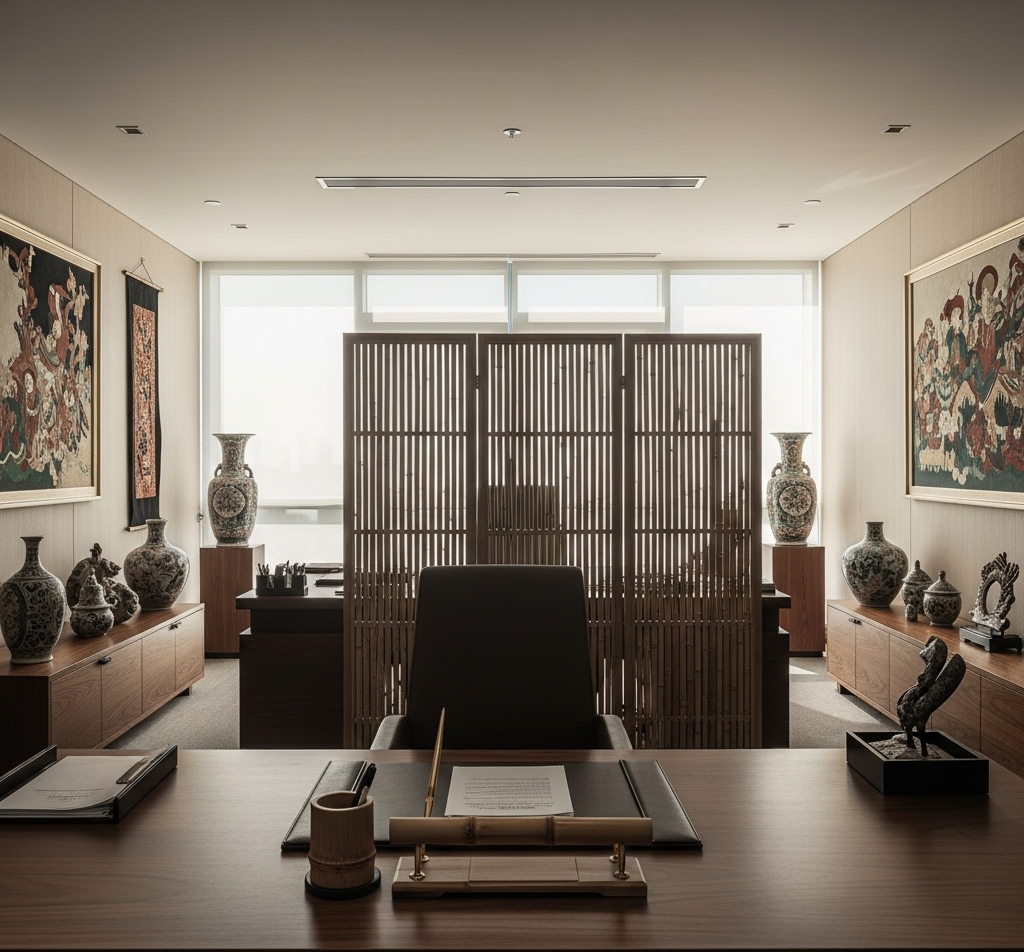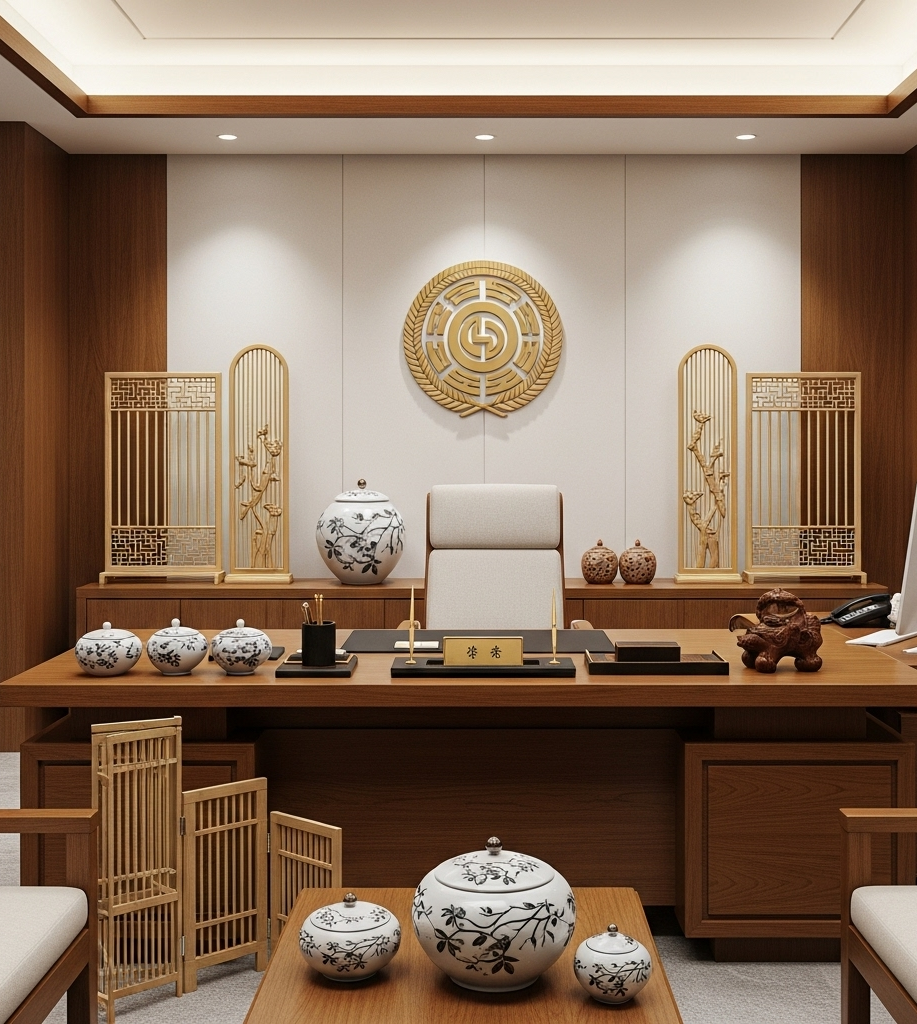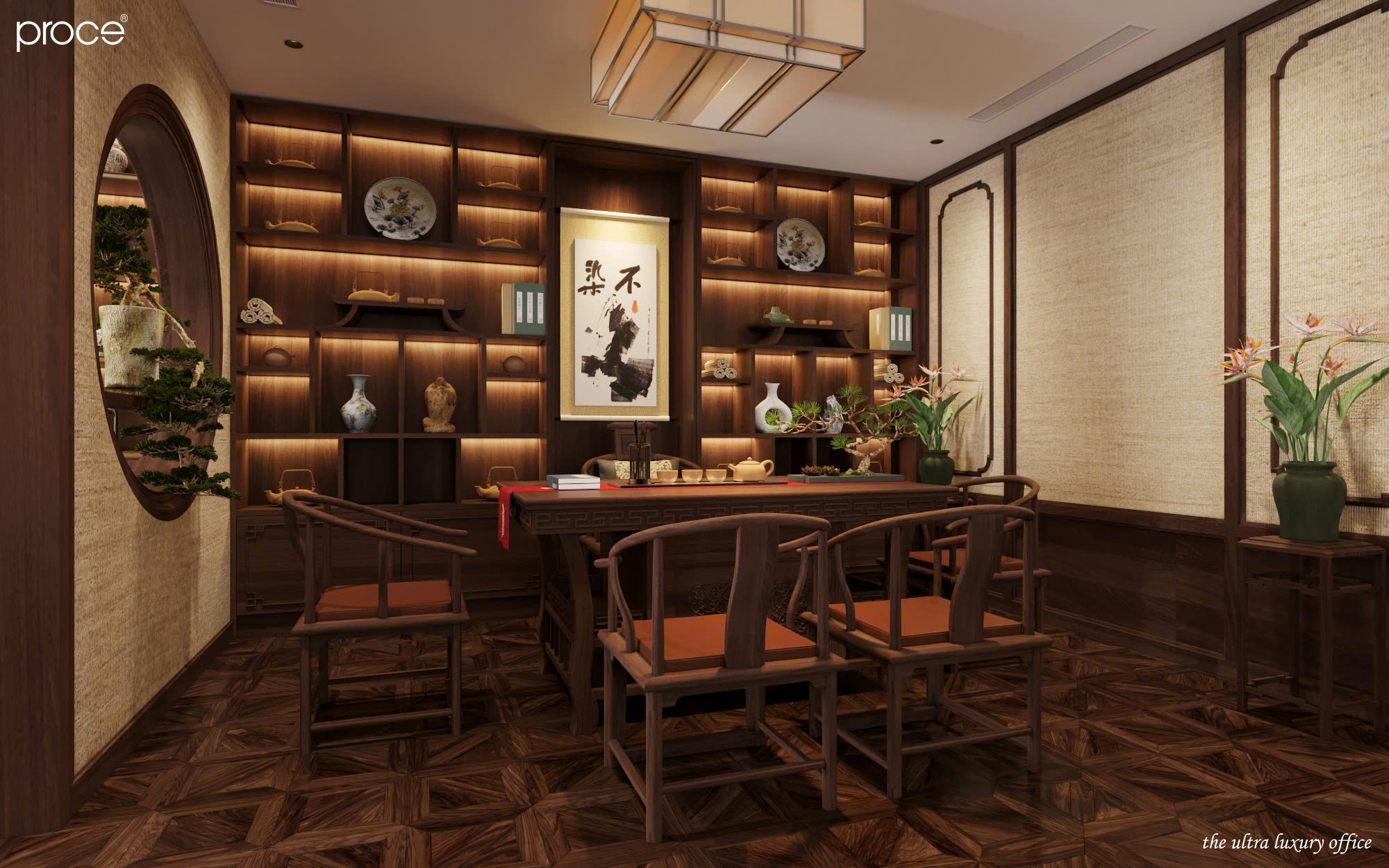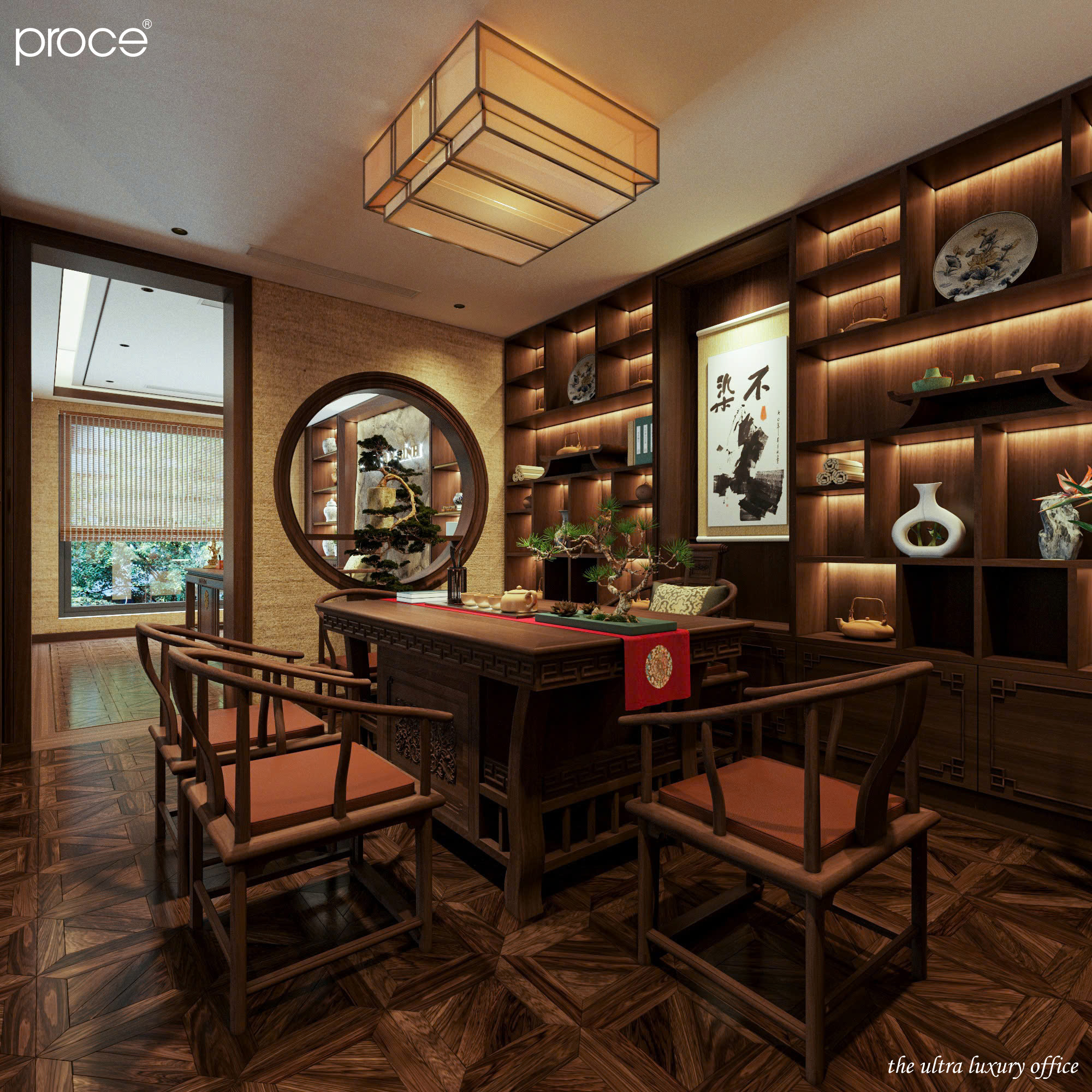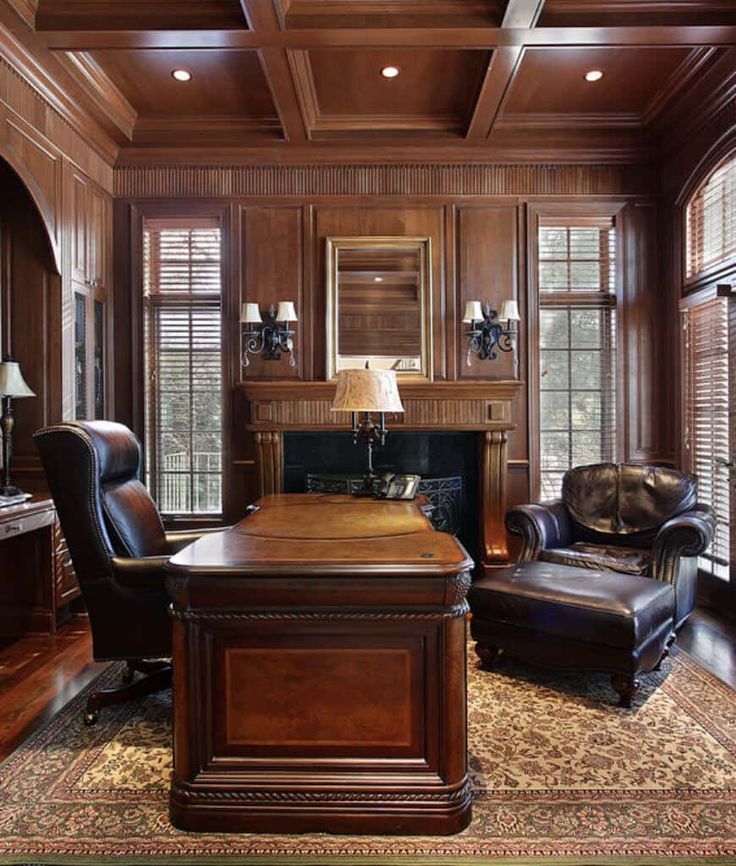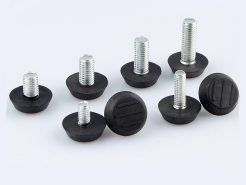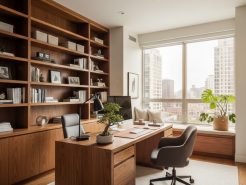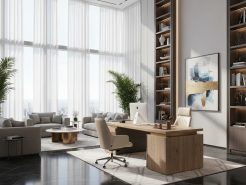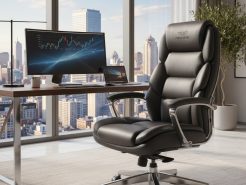The chairman office is not only a place to operate the business. It is also a place where power is created through architecture. Where thinking becomes shape and leadership spirit permeates every wood grain and light color. Each country breathes its own nuances into that room. Vietnam brings its handmade identity into the operating space like a cultural red thread. China builds a business tea room – where silence is a form of power. Japan encapsulates power in meditation and minimalism. America has a presidential design style. Where every line shows strength like firm muscles. Expressing the spirit of a new-age leader. Let’s explore with us the unique cultural beauty of each country in the design of the president’s room through this article!
1. Vietnam Chairman Office – When the national spirit is present in every piece of wood
Space – The intersection between tradition and modernity
The office of Vietnamese business leaders is not simply a place to make important decisions. It is also a space that crystallizes the national spirit. Where tradition and modernity blend together in every design detail. Entering the room, the first impression is of calculated symmetry. A layout that clearly recalls the ancient Hue royal architecture. Where each line has a profound meaning. It creates balance while conveying the solemnity of a center of power.
The room walls are covered with mahogany and ironwood – two precious woods with warm brown tones. Not only are they durable over time, but they also evoke the rusticity and solidity of the ancient Vietnamese. On the wooden surface, soft light reflects through the glossy lacquer layers. Creating a feeling of silence and elegance. Silk is used to make curtains, with neutral colors and traditional embossed patterns. Like a soft breeze gently touching the depth of culture. Bat Trang ceramics are cleverly present in decorative items. Such as a cracked glaze ceramic vase, a lotus bowl with a slender bamboo branch… It is enough to make the space seem to have the “echo” of a thousand-year-old craft village.
Here, each material is not simply for beauty, but also a story about origin – where beauty is inseparable from national identity.
Spirit of craftsmanship
If space is the shell that represents the intersection of values. Then the spirit of artisanal art is the silent soul. Weaving the delicate beauty of the president’s office. In that solemn place, art does not exist in an ostentatious way. But quietly spreads from seemingly small details but contains the elaborateness of the artisan’s hands.
Traditional lacquer painting – a unique art symbol of Vietnam. Chosen as a highlight in the space. With a deep color scheme, the layers of paint overlapping over time create visual depth. Like the thousand-year history of the nation. Each stroke, each color block is highly symbolic. It could be an image of a rice field, a river or a flock of birds flying in the vast sky. All suggest longevity, about the journey of building the country over many generations.
The desk and chair are not just furniture. They are hand-carved works on solid rosewood. The carvings are curvaceous, sophisticated, yet restrained. They evoke the image of a leader who is steady, calm, yet not lacking in sophistication. Each carving reflects the management philosophy: it must be as sharp as a wood carving knife. And as careful as the way the craftsman places each chisel stroke. That is the art of leadership – where every small detail reflects a grand vision.
Cultural Symbols – Leading with National Memory
In such a space full of depth, cultural symbols are not merely decorative. They are present as spiritual supports, quietly guiding thoughts and emotions. Dong Ho paintings, simple but imbued with folk philosophy, are hung solemnly on the wall. Where people can stop to admire each rough wood carving, each color from soil, leaves and ash. Evoking the image of a close and humane Vietnam.
Cultural icon
Right in the center is the Dong Son bronze drum – an ancient symbol, chosen not for its splendid decoration. But for the layers of meaning it carries. The images of cranes, rice pounders, concentric circles… are not just motifs, but reminders of the origin. Of the sustainable values that need to be preserved when making each strategic decision. That is also how this space evokes the connection between business spirit and indigenous cultural spirit. Between modern development and traditional morality.
A small bamboo tree placed in a jade ceramic pot is also a meaningful detail. Bamboo – a tree symbolizing the resilience and resilience of the Vietnamese people. It is brought into the space in a humble but intentional way. Next to it, the delicate miniature terraced rice field model from the Northwest highlands is not only an aesthetic element. It is also a symbol of labor, of indigenous intelligence and adaptation to nature. All of it is like a whisper from memory, so that the leader never forgets where he comes from.
A symphony of national spirit
This is not just a working room. It is a quiet symphony of culture. Where every architectural element, every material, every little detail blends together. Supporting each other to create a space full of inspiration and spiritual depth. Nothing is superfluous, nothing is ostentatious. Every line is arranged with consideration. Like a carefully composed piece of music to awaken emotions, to convey things without words.
In that space, every important decision not only comes from the sharp intellect or strategic thinking of a business leader. But is also nurtured by cultural values deeply rooted in the Vietnamese soul. The office becomes a “conductive medium”, where the past and present meet. Where inspiration and responsibility intersect. It is both a place to run the work. And a place where the leader faces the future, while still holding fast to the fundamental values.
And so, the office of the company president not only reflects the leadership personality. But also is a miniature image of Vietnamese corporate culture. Profound, persistent, humble but no less brave. Where the traditional spirit supports the progress of the times. (President’s office design – Bringing traditional art into architecture).
2. Chinese Chairman Office – Inspired by Tea Ceremony Space
Designed like a tea room – where meditation, religion and art meet
The office space of the Chinese business president does not aim for ostentation. But chooses a different path. The inner stillness is inspired by the traditional tea room. Where meditation, religion and art converge in the same quiet flow. The room has the image of an ancient tea room. With a simple but intentional arrangement. The main color tone is dark red wood with long wood grain. Like the flow of time, both classic and modern.
The table and chairs are designed in the Ming Dynasty style. With a graceful, uncluttered design. Each curve highlights the neatness and discipline in leadership thinking. Ancient celadon pottery is dotted on the shelves and tea table. It is both a decorative element and a spiritual one. Like a part of Chinese culture breathed into a modern space.
Although it is a strategic operations room, the room has the quiet of a meditation room. A place where the mind can drift in a peaceful stillness. There, concentration and insight do not come from noise. But from the silence preserved through each layer of material and soft light. A space for deep thinking rather than hasty action.
Chinese Cultural Symbols – The Connection Between Ethics and Aesthetics
Entering the room, one not only feels the Oriental aesthetics. But also clearly sees the quiet but persistent presence of Chinese cultural values. Hanging solemnly on a large wall is a calligraphy with strong Chinese strokes. Those lines do not appear by chance. They contain the essence of Confucian thought: “Correct the mind – cultivate the body – regulate the family – govern the country”. These are ethical principles, the core of a leader’s behavior. Starting from oneself and then expanding to the community, business and the whole country.
Opposite the calligraphy is a watercolor painting of rolling mountains hidden in the mist. It symbolizes the harmony between man and nature, between ambition and restraint. The ink strokes fade over time, reflecting a leadership philosophy. They are people who know when to advance, when to retreat, and always maintain their inner balance.
The remaining decorative details, from screens, ceramic pedestals to light silk curtains… are all selected according to feng shui principles and visual balance. Nothing is superfluous, no object is just for beauty. Each symbol is a layer of meaning, each material is a layer of emotion. All blend into a cultural stream that silently flows through every corner of the room. Permeates the way the leader makes decisions.
The Role of Tea in Design – Calmness is a Power
In the center of the room is not a bulky desk. But a small, luxurious wooden tea table. On it is placed a handcrafted blue-glazed ceramic tea set. The tea set is not just an object. It is a symbol of dialogue, of a calm spirit. And of the art of controlling emotions in leadership. For the Chinese, a cup of tea not only soothes the taste buds. It is also a way to calm the mind. In the light aroma of tea, people can pause for a moment to listen to what has not been said. See through what is unclear and consider what is about to be said, what is about to be done.
Placing the tea table in the center of the space is not simply a difference in design. It also shows a unique management mindset. Power does not lie in imposition, but in the ability to listen and create connections. Every reception, every closed meeting can also start with a cup of tea. To calm people’s hearts and make their thoughts clearer. Tea here is both a drink. And a subtle tool for the leader to regulate the rhythm of the conversation. And quietly shape the direction for big decisions.
Powerful Zen Monastery in the Heart of Business
China Business President’s Office It is not simply a place for management or signing. It is like a “power monastery”. Where every decision is nurtured from inner peace. Not from external pressure. The design of this space is not intended to show power. But to serve a profound, calm and experienced leadership style.
From the arrangement, the choice of light. To each piece of pottery or wood material… Everything is aimed at simplicity but not simplicity. That is the art of “hiding” of Eastern power. No need to show too much, but still make others realize the depth and temperament of the leader.
This space is also an affirmation: leadership is not just about giving orders, but the art of directing, coordinating and inspiring. Every working session and every conversation here takes place in a state of empathy. Where reason is guided by the heart. And the heart is sustained by thousands of years of cultural values.
And so, the office is the place for strategic planning. Where the leader can return to himself in the midst of the hustle and bustle of the business world. While still maintaining a quiet space to think, to contemplate, to go further without losing his roots.
3. Japanese Chairman Office – Meditation in the Digital Age
Minimalist style – Bold Zen
This space appears as a hidden Zen room in the middle of a bustling city. There is the elegance of pine wood, the softness of tatami mats. And the shoji wall frame is covered with soft diffused light. Each step on the tatami floor is as light as a breath, a reminder of the value of stillness.
The desk is placed low to the floor, in accordance with the basic spirit of meditation. It helps the person sitting close to the ground, close to the peace of mind. The chair is zaisu style or low cushion with a light backrest. Just enough to keep the back straight, but still creates the feeling of being cherished in a silent embrace.
The main color tones often used in this style are pure cream, ivory white and deep yellow of wood. All blend together to create a gentle atmosphere. Instead of dominating the senses. This place only invites the sitter to relax their breath, calm their mind, so that each leadership idea gradually shines in the silent silence.
Materials and layout – emphasizing “space”
With just a few carefully selected objects, the space becomes full of emotion and depth. A small bonsai pot is neatly placed in the corner of the room. With its lush green foliage as a gentle reminder that nature, no matter how small, still deserves to be cherished and cared for. On the wall, a piece of Japanese calligraphy is hung solemnly. The black ink strokes are simple but contain the philosophy of “ichi-go ichi-e”. Each moment comes only once in a lifetime and therefore needs to be lived to the fullest.
Nearby, a katana sat calmly. Not as a display of power. But as a symbol of the Bushidō spirit – a philosophy of loyalty, integrity, and fortitude.
All these objects are arranged at a moderate distance. Enough for the leader to see, to touch, but not creating a feeling of heaviness or clutter. The gaps between them are not a lack. But a breathing space for contemplation. For thought and for the spirit to be free in a space unfettered by material things.
Quiet to observe – Less to listen
The space is designed with almost absolute silence. Helping leaders easily focus deeply on each thought and decision. Materials such as tatami or wood wall panels have the ability to absorb sound. Making all unnecessary noises almost disappear. The silence here is not silent. But it is like speaking in an invisible, powerful and profound language.
In this room, leaders don’t get caught up in the rush. They take the time to listen, not just to the words. But also to the silence between the words. It is the silence that becomes a tool for deeper observation, for seeing more clearly what is not being said.
The space encourages less talking and more listening. Every response is nuanced, every choice is carefully considered. And every action carries the weight of thoughtful consideration. Here, stillness does not slow down the pace of development. It is a way for leaders to consider more carefully before making decisions.
The president’s office is a powerful meditation room
Although it is a place for the leader, this room does not have an ostentatious or imposing appearance. It is like a “power meditation room” – where authority is not expressed through noise. But through the steadiness and calmness from within. This is not only a place for important meetings or signing of big contracts. But also a place where the leader finds himself. A place where the mind is rearranged and emotions are kept in balance.
Every detail in the room is intentionally minimalist. To let the most essential things be revealed. The space remains quiet to create breathing space for the leader to make decisions with clarity. Instead of being caught up in the pressure or noise outside. Here, power does not come from a loud voice. But from the ability to listen, understand and act with inner confidence.
Because of this, every gesture, every decision in this room has its own unique rhythm. Slow, clear and full of determination. Like the breathing in meditation: not rushed, not lost, but strong from stillness. (Japanese-style president’s room design – Simplicity is the pinnacle).
4. American corporate president’s office – When power is dressed in design muscle
Presidential style design – Symbol of power and intelligence
In America, a president’s office is not simply a place where decisions are made. It is also an arena for the demonstration of character. A place where power is shaped, materialized, and arranged with almost absolute precision.
The design style here is not soft, not dreamy. But solid like the steel skeleton of a business machine. Every contour, angle, and material is carefully selected to exude the luxury and unique class they bring.
Overall design – Shapely strength and powerful presence
The room appears as a majestic architectural block. Where the large scale is not only about size. But also the way the space asserts its position. High ceilings, dark wood paneling with a smooth surface like classic velvet. Combined with warm, spreading yellow light. All create a feeling of both warmth and power. Like stepping into the center of a master strategist.
Unique interior in every detail
At the center axis, the desk is like a true “combat table”. Large, square and decisive. The desk is usually crafted from solid walnut wood. It has a distinct muscular appearance. The strong grain lines are like hand veins, like rippling muscles hidden deep under the wood. They have both the weight of nature and the cold precision of mechanics.
The President’s chair – with a massive, sturdy design like a personal fortress. It is covered with soft cowhide. Each hand-stitched line is as meticulous as the outfit of a general, neat and dignified but not ostentatious. The high backrest is higher than the head, creating a sitting position that covers the entire surrounding space. Making the person opposite unable to not feel the weight of power. Sitting there, the leader is no longer simply a captain leading. But becomes a strategic coordinator. Both observing the whole picture and controlling every small detail like a general in the middle of a battle map.
On the ceiling, each strong line is drawn straight, the recessed lights are arranged perpendicularly like a strategic drawing. Sometimes, a round hanging lamp reminiscent of the presidential seal is chosen as the highlight. Everything is geometrically balanced to create a sense of order, absolute control. And a leadership force that does not need to be spoken loudly to make others respect.
Symbolizing Power – Space as a Mechanism of Visual Prestige
On the main wall is a large portrait of the chairman. His eyes look straight ahead, his demeanor calm but full of authority. Next to it is the company logo, a market share map or a global strategy model. These are wordless symbols of leadership vision and brand coverage.
Some unique, creative military-style decorative details appear as strategic accents. Such as airplane models, aviation clocks, mechanical design drawings… All evoke the coordination mindset of a general. Not just leading. But also calculating the path with high precision.
The living room is integrated right in the room. With a low sofa, square tea table, luxurious materials and carefully selected dark tones. It shows class and reinforces the initiative in every conversation. Customers and partners are not directly pressured. But they always clearly feel the position of the leader – when every look, every seat is under the chairman’s eyes. A discreet but effective arrangement, clearly showing power in the presidential design style.
The President’s Office as a “Design Armor” – Protection and Performance at the Same Time
In the office of an American business president. A leader not only needs to be good, but also needs to exude the appearance of a leader. Designing a presidential-style office is not simply about honoring the image. It is about creating a “silent front line”. Where the mind and body enter a state of readiness for action.
This is a place that does not accept ambiguity. Every line must be clear. Every angle is clearly defined like a boundary in strategic thinking. This space needs no introduction. It makes those who enter understand: this is the office of a leader. A place where power does not need to be displayed. It is present through precision, order and the aura that radiates from every detail.
Conclude
The office of a corporate president is not simply a place to handle work. It is the realm of vision, ego and the silent presence of power. There, every interior detail is a metaphor for the management style. Every light and dark space is a shade of strategic thinking. Vietnam breathes tradition into modernity. China turns silence into authority. Japan turns minimalism into strength. And the US chooses the style of a powerful president, where design becomes visual muscle. In short, the office of a corporate president does not only create a working space. It also depicts a strong leadership statement through every architectural line.
=====\
PROCE – TOTAL LUXURY OFFICE SOLUTION
Website: https://proce.vn/
Youtube: https://www.youtube.com/@noithatvanphonghangsang
Fanpage: https://www.facebook.com/vanphongnhapkhauProce
GG Business: https://business.google.com/dashboard/l/15115233216900975876
Linkedin: https://www.linkedin.com/company/74359718/admin/
Hotline: 090.115.6767
#phong_chu_tich; #phong_lam_viec_chu_tich; #phong_chu_tich_hang_sang
#thiet_ke_phong_chu_tich; #noi_that_cao_cap_phong_chu_tich; #phong_chu_tich_dang_cap
#decor_phong_chu_tich


